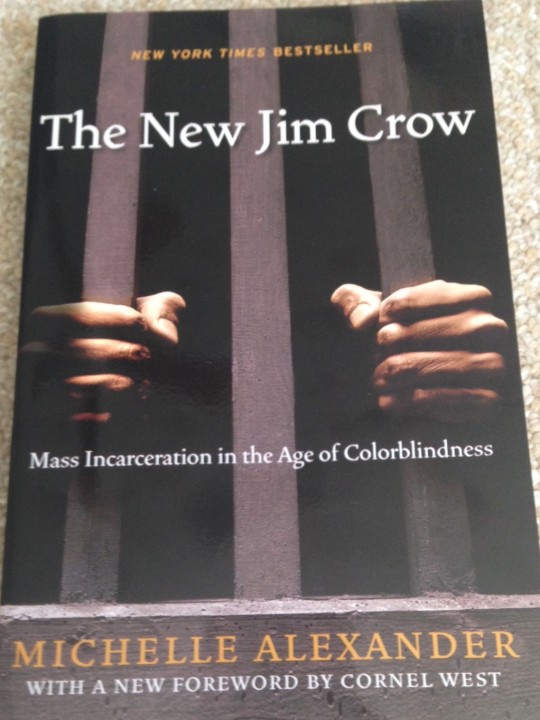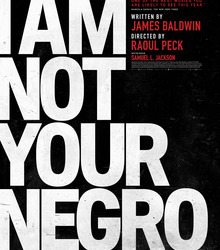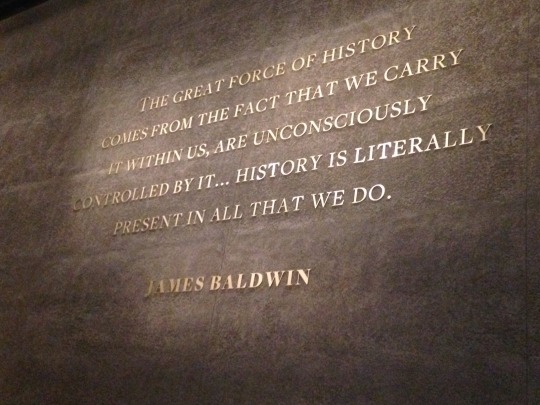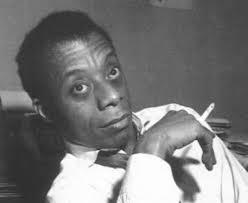#woe how I crave statistical knowledge
Text
This came up in a chat w/ friends and I’m curious
Do you have arachnophobia, and are some Guys worse than others?
#I don't like spindly guys and I'm not phobic#Mostly curious b/c this came up as a topic with some phobic friends and one of em thinks that the hairy guys are worse#Now I gotta think of things to put in the tags since idk if tumblr only puts the first 5 into tags still#I was talking to a bud about spiderverse 2 and I was surprised that the [redacted] didn't trigger their phobia#Also sorry 2 all my phobic friends but also I'm guessing y'all have blacklist tags so it'd probably be fine anyways#polls#spider#spiders#woe how I crave statistical knowledge
8 notes
·
View notes
Text
#OscarsSoDiverse: “O.J.,” “13th,” and “Negro,” Focusing on the Color Line
#OscarsSoWhite is suddenly SO last year, as The New Yorker’s cover this week announces. Now it’s #OscarsNotSoWhite, as diversely pigmented actors and actresses populate some of the year’s most memorable feature films. From Fences to Hidden Figures to Moonlight, an array of stories about race and its impact on lives both real and imagined filled the screen and have the opportunity to compete for some of 2016’s most sought-after movie prizes—best actor and actress, best film, and even best director.

For my money, though, the most interesting category from a race-in-America perspective goes to Best Documentary film. Three of the five nominated films in the DOC category try to get at the question of the role of race in American life, and each one succeeds in various ways of pointing out the perennial problem of America’s original sin. I am Not Your Negro, 13th, and O. J.: Made in America—all three made by black film makers—push the boundaries of our understanding of the issues African-Americans face in our society and demonstrate the enduring legacy of chattel slavery, Jim Crow segregation, and the devaluation and twisted logic fraught in the social system based on judgment of human beings based on the color of their skin.
Perhaps the most fascinating of these three films is Ezra Edelman’s O. J.: Made in America. This seven-and-a-half-hour-epic traces the life and legacy of fallen American hero everyone came to know simply as O.J. From football legend in the 1970s to TV ad man (running through airports for Hertz) and B-grade actor in the 1980s to alleged wife killer in the “Crime of the Century” in the 1990s, O. J.’s story is a cautionary tale about race, class, and privilege in glitzy L.A. and how the lens of racial bias colors all of our judgments, no matter which race you are classified as belonging to.

This well-worn story of the murder of Simpson’s wife, Nicole Brown, and the unfortunate Ron Goldman—a waiter who was simply returning a forgotten item from the restaurant he worked at—would seem an odd choice for making a film documentary for a contemporary film maker. But Edelman, the bi-racial the son of Marian Wright and Peter Edelman, perhaps had it in his DNA to deconstruct the most talked about trial of his youth and disentangle the threads of racism, sexism, heroism, and any other -ism tied up in this tragic tale of woe-all-around.
I was not inclined to spend the time watching a series of five 1.5 hour-long episodes to get to the bottom of whether or not O.J. was guilty. I had lived through the “Year of Living Dangerously” as the crime was reported on and sensationalized, and as the trial was broadcast daily by breathy journalists and pondered over nightly by millions of Americans. But while attending the Washington Ideas Forum put on by The Atlantic this fall, I heard Ta-Nehisi Coates call the film the best documentary of the year and then interview Edelman about the making of the film. I became intrigued and wanted to see what all the fuss was about.
It is not a pretty story. It takes us through the allegations that Simpson, a black man, had killed his sexy and glamorous white wife in a jealous rage one night and then jetted off to a motivational speaking engagement. The details are horrifying, and Edelman does not back away from any of the gore or titillating facts of the case. We are re-introduced to the entire cast of characters: the sly defense attorney Johnnie Cochran (“If it [the glove] doesn’t fit, you must acquit.”), the hapless prosecutors Marcia Clark (white) and Christopher Darden (black); O. J.’s friends and detractors, who regularly were paraded into our living rooms back then thanks to the rise of daytime talk shows; the uber-bad-cop Mark Fuhrman whose reputation and career took hit after the media portrayed his as the fall guy; and perhaps most notably the grieving father of Ron Goldman, whose dogged determination to nail the SOB finally brings Simpson to his knees and knocks that cocky smile off of his face.

But the film is so much more than a seedy whodunit. Edelman takes the opportunity to explore how O. J.’s family got to California (the Great Migration), how he rose from lower-class circumstances as a result of his athletic gifts to become the classy “new black” role model, one that whites could readily embrace, and how he attempted to erase race from the equation—expecting people to judge him based on his abilities, not on his skin tone. It is also a story of how celebrity culture kills the soul, of spousal abuse and how women’s claims about their abusive husbands are consistently devalued, and how the lived experience of race in America could so completely color the way one looked at the O. J. trial. If you were white, O. J. was obviously guilty; if you were black, there were no end of explanations as to why he was innocent and being framed.
Most of the players are still around and offer “color commentary” on their roles throughout the trial phase of the film. We see footage of them then and now. We also hear from some of the jurors who (spoiler alert!) found O.J. innocent mostly because they were not going to give their sainted hero up to Whitey after all of the bad things they had experienced at the hands of “the Man” throughout their lives. It is shocking, mesmerizing, absorbing TV (the series aired on ESPN), and I can’t say I’ve ever seen anything like it. Most of all, as Time Magazine called the O. J. story, it is “An American Tragedy,” played out in five parts.

Ava DuVernay’s 13th takes as its subject the Thirteenth Amendment to the U.S. Constitution—the one that outlawed slavery—and demonstrates how what might seem as a throw-away phrase in this two-sentence amendment has become a catalyst for mass incarceration and the ruination of the lives of multiple generations of black American males. The film boasts an impressive array of talented scholars and social commentators, including Harvard scholar Henry Louis Gates, CNN talking head Van Jones (who predicted the Trump victory), New Jersey junior Senator Cory Booker, and 1970s radical activist Angela Davis, to name but a few.
“Neither slavery nor involuntary servitude, except as a punishment for crime . . . shall exist within the United States. . . .”
13th could be called a more “standard-style” documentary, providing insight and information on a topical subject in about 90 minutes. Documentaries of this sort are the fondue of modern American intellectual life. You can become conversant on any subject by dipping into a melting pot of ideas—stirred regularly by experts on the matter—and emerge feeling satisfied (knowledgeable) but craving more.
The inspiration for 13th in part comes from Michelle Alexander’s breakthrough book The New Jim Crow, which provided the first mass-marketed insight into mass incarceration when it was published in 2010. The book became a New York Times bestseller and inspired a fresh look at America’s prison industrial complex through a racial lens, leading to a call for criminal justice reform that continues to this day.
DuVernay features Alexander prominently throughout the film, citing statistics and historical developments that led to our current situation whereby every third black male in America can expect to spend time in jail as compared to every seventeenth white male and where 40 percent of our entire prison population is black. The film is full of harsh facts like this, often presented in stark black and white graphics, almost like a teacher writing notes on a chalk board. It shows how our prison population grew from 370,000 in 1970 to more than 2.3 million in 2014—a vast increase during a time when crime was actually going down. The causes for this development—Bill Clinton’s 3-strikes policy, mandatory minimum sentencing requirements, the militarization and over-funding of the police force—all conspire to take judgement out of the justice system and lock up more of our (mostly black) citizen and for longer periods of time, often for minor offenses.

13th is a whirlwind tour of our “crimigration” system—as young black men are moved from urban blight to prison in a few easy steps. We hear about the school-to-prison pipeline and the prison industrial complex run often by private corporations for profit. We get history lessons, from Nixon’s call for “law and order�� to Reagan’s criminalization of drug abuse to Obama’s plea in 2015 for massive changes in how we deal with the growing crisis (and costs) of nearly five percent of our population being locked up—the highest percentage of any nation on earth. All of this is presented to the soundtrack of hip hop, with Public Enemy coming out looking like prophets for calling out these social outrages at the dawn of the rap era. DuVernay’s film is shouting at all of us. “We are tolerating this,” one of her many guests says. We are all, therefore, complicit. 13th is a damning documentary of the American justice system, and no one is spared its fury.
I am Not Your Negro, on the other hand, serves its bile cold, which makes it all the more difficult to swallow. It chokes in your mouth and you want to vomit. This spoken word documentary, directed by Haitian-born filmmaker Raoul Peck, apparently recounts word-for-word the 30-paged treatment that author James Baldwin created to sell his publisher on his idea for another blockbuster book in the late 1970s when his star seemed to be waning.(Excerpts from Baldwins other works are also included.) The pitch hangs on the fact that Baldwin was friends with the three most lionized American black martyrs of the 1960s—Medgar Evers, Malcolm X, and Martin Luther King, Jr., and works its way through Baldwin’s grieving over their deaths and what each man meant to him and to the American black civil rights movement.

Though the book was never completed (and McGraw-Hill sued Baldwin’s estate for the $200,000 advance Baldwin received), the treatment itself is its own mini-masterpiece of analysis of the black man’s plight in modern American life. Baldwin was such a character, such a force on our country’s incessantly race-obsessed scene in the 1950s and 1960s. His articles and books were devoured by the literati and bohemian crowd alike for their sharp, acerbic insights into white American consciousness. And the film shows wonderful clips of Baldwin during his heyday, most tellingly when he debated William Buckley at England’s Cambridge University in 1965 and when he appeared on the Dick Cavett show in 1968. Baldwin’s fire proves too much for his white counterparts—the lost look on the face of the typically unflappable Cavett when the incendiary Baldwin lets off a riff about how blacks are treated is alone worth the price of the ticket.

Actor Samuel Jackson gives voice to Baldwin’s prose as a jazzy aural backdrop infuses the proceedings with a “Birth of the Cool” vibe. But the author’s prophetic vision is what dominates the film as Baldwin tells how his conscience urges him back to America from his Paris expat hangouts as the country begins its long-overdue civil rights saga. And he recounts in detail where he was and what he felt when each towering figure was gunned down and how he felt compelled to visit their wives and families after each assassination. He doesn’t speak of the toll these visits took on his own consciousness. He doesn’t need to. The pain and outrage inform every sentence of this sharp, acid script. It is a wonder that the man didn’t just self-immolate on screen, so full of passionate observation and Cassandra-like foreboding was he, desperate to make white America understand what it was doing to its own citizens and its own self.
Of course, I was particularly taken by the photographs of Jimmy Baldwin with Medgar Evers and his children. Having now met the grieving widow and daughter, having stood on the very driveway where Evers was executed, having touched the places where the bullet entered his home and rested on the kitchen counter, I was choked with emotion to see those scenes replayed. “Why is our history so sad?” I wondered. “Why must we relive this nightmare again and again?”

James Baldwin and Medgar Evers in the carport of the Evers home in Jackson, Mississippi, where Evers would be gunned down several months later.
These are the questions Baldwin seems to wrestle with, as well, and his answers point not only to government policies, but to the culture itself. Baldwin, it turns out, was a film buff from an early age. And this is where the film offers some relief but also some context. We see film clips of such varied fare as Birth of a Nation (the film also makes a brief appearance in 13th), Imitation of Life, Guess Who’s Coming to Dinner, as well as Doris Day’s and Gary Cooper’s works (films Baldwin hated for their sickening portrayal of pathetic white innocence).
Baldwin’s mother and his auntie would frequently take him to the picture shows when he was young to escape their daily drudgery. There, at the age of 5, Baldwin was enthralled by a tap-dancing Joan Crawford and fell in love with Bette Davis, who possessed similar “bug eyes” just like his. He later came under the spell of his white school teacher who mentored him, brought him books to read and took him to various cultural events all over New York City. Because of her, “I could never hate white people,” he reveals, which make his dire predictions of where America is headed all the more heart-rending. “To look around America today,” he tells us from the grave, “is to make the prophets and the angels weep.”

James Baldwin’s words writ large at the new National Museum of African American History and Culture in Washington, DC.
It's hard to tell which of these films (if any) will be showered by Oscar’s gold tonight. All three are deserving. Perhaps, as often winners are wont to say, “It’s an honor just to be nominated in such good company.” Baldwin’s takedown of Hollywood kitsch may cost Peck the Oscar; DuVernay’s rage at the institutional racism that pervades our current justice system may come on too strong for most Oscar voters (most of whom, as we well know, are not black); so perhaps it’s the languorous, complex, perfectly-attuned-to-our-times O. J. film that Edelman serves up that will win the honors. There’s also the distinct possibility that these three “race films” will cancel themselves out and one of the other two nominated films (one on autism, the other on refugees) will take home the prize.
No matter. The Academy of Motion Pictures has finally broken through the color barrier and nominated three exceptional studies of black American life. This in itself is worthy of celebration. Perhaps now that we see the problems more clearly we can begin to make some progress? I can hear Jimmy Baldwin’s wry, hoarse, infectious, catty laugh all the way from heaven. “Don’t bet on it,” he’d say.

#James Baldwin#I Am Not Your Negro#Ava DuVernay#13th#Ezra Edelman#O.J.: Made in America#Malcolm X#Medgar Evers#MLK#Martin Luther King#Oscars2017#OscarsSoWhite#OscarsSoDiverse#OscarsNotSoWhite
1 note
·
View note